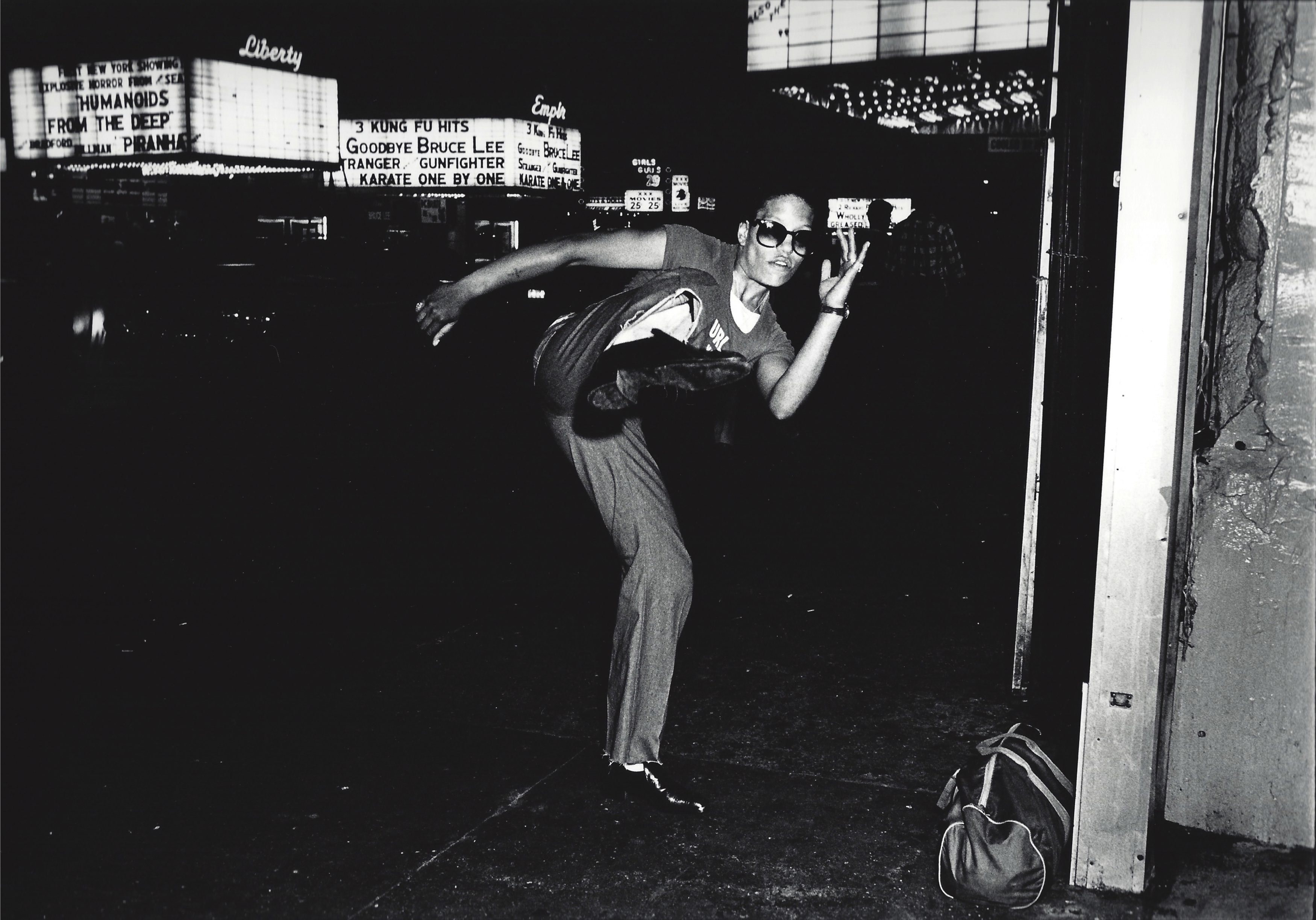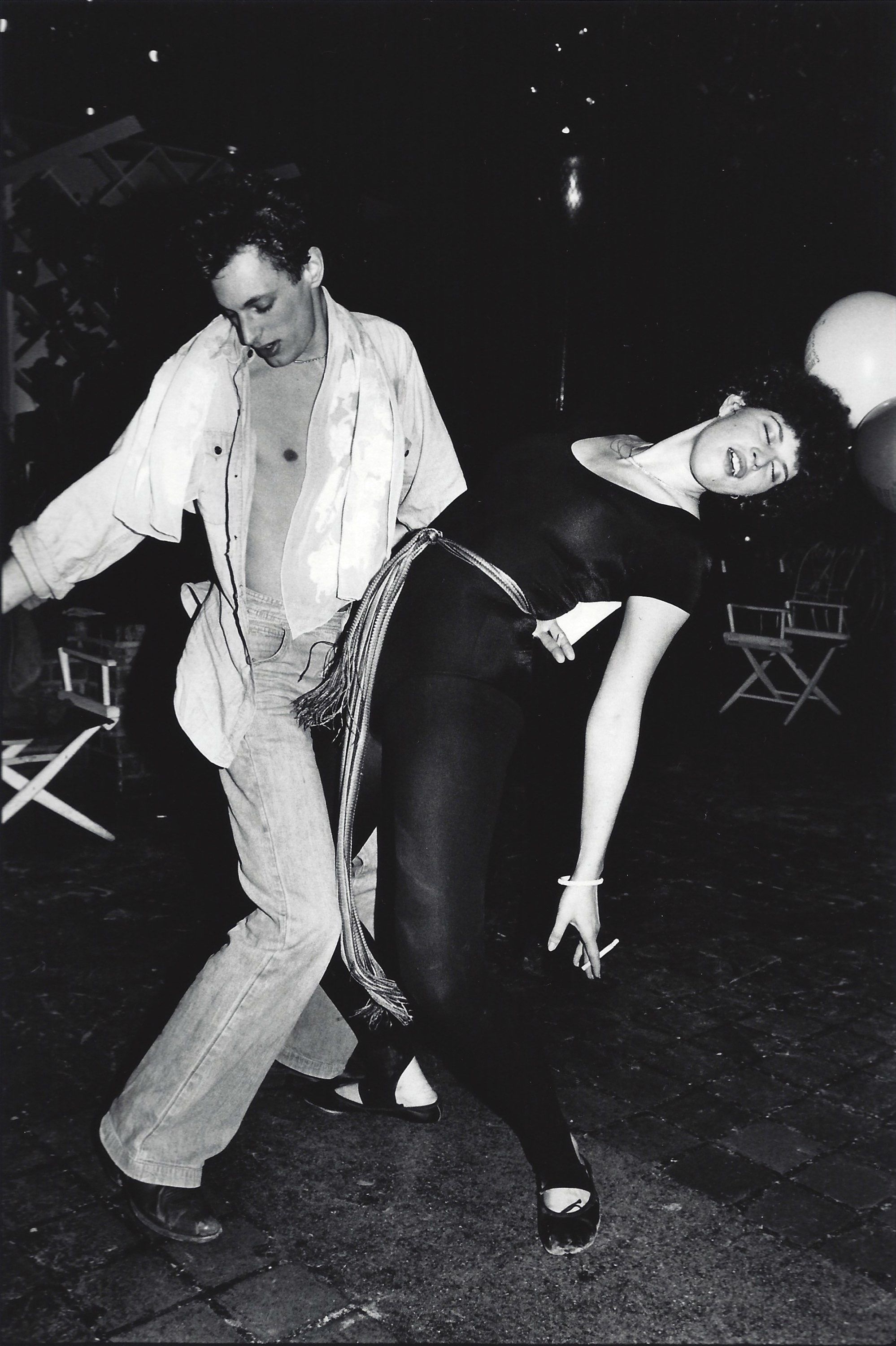Arlene Gottfried’s scenes of New York nightlife
- Text by Miss Rosen
- Photography by Arlene Gottfried

In the late ’70s, American photographer Arlene Gottfried (1950-2017) was deeply immersed in the decadent delights of New York nightlife. Whether partying at Studio 54 with Disco Sally, hanging out with the trapeze artists at GG’s Barnum Room in Times Square, or kicking it with Stonewall legend Marsha P. Johnson during Gay Pride, Gottfried was fully in the moment; ever-ready to capture the scene with those who lived on the fringes of the city.
Gottfried’s New York, blighted by the systemic racist policies of “benign neglect”, had been crumbling into despair since the late ’60s. But that didn’t stop those who called it home from persevering. In the new exhibition, Arlene Gottfried: After Dark, we see the city’s nightclubs, strip joints, dive bars, and drug dens through the artist’s eyes.
“The nighttime work was a big part of who Arlene was as an artist and a person,” says gallerist Daniel Cooney, who first began showing Gottfried’s work in the seminal monograph, Sometimes Overwhelming (powerHouse Books) in 2014. “She spent decades exploring the nooks and crannies of New York: nightlife, street life and domestic life.”
Included in the exhibition are a series of never-before-seen photographs Gottfried took on the Lower East Side, documenting the heroin epidemic that swarmed through the city during the ’70s. “I honestly think the Heroin work was Arlene’s attempt to understand her friend, the poet and playwright Miguel Piñero,” Cooney says.

Heroin Series, late 1970’s

GG’s Barnum Room, Times Square, 1979
“Arlene was eternally curious about people. She had a lot of chutzpah and determination. She always faced life directly and with empathy for her subjects. She never looked away or ignored, ridiculed or judged. She relates to the people on a very human level, and approached them with honesty and humour.”
No matter where Gottfried travelled, she always looked her subjects in the eye, and they responded in kin. “Arlene got all these photographs of people really uninhibited,” Cooney says.
“All the people in her photographs are looking at her and acknowledging that she’s there. She’s not sneaking around. She had an understated presence that allowed her to be in truly gritty places where people got down and dirty, and created pictures that spoke for her.”
Gottfried played it close to the vest. “Arlene didn’t like to talk about herself and I think she felt overwhelmed talking her about her work,” Cooney says. “It was difficult to get to know her but I did get to know her through her work – that’s where she revealed things about herself. That’s an indicator of a true artist. See her work and you will know her.”

Trapeze Artists, GG’s Barnum Room, Times Square, 1979

El Barrio, late 1970’s

Times Square, late 1970’s

Dance A Thon, late 1970’s

Young Man In Bed, late 1970’s

Heroin Series, Man With Beer And Cigarette, late 1970’s
Arlene Gottfried: After Dark is on view at Daniel Cooney Fine Art in New York until October 26, 2019.
Follow Miss Rosen on Twitter.
Enjoyed this article? Like Huck on Facebook or follow us on Twitter.
Latest on Huck

In the ’60s and ’70s, Greenwich Village was the musical heart of New York
Talkin’ Greenwich Village — Author David Browne’s new book takes readers into the neighbourhood’s creative heyday, where a generation of artists and poets including Bob Dylan, Billie Holliday and Dave Van Ronk cut their teeth.
Written by: Cyna Mirzai

How Labour Activism changed the landscape of post-war USA
American Job — A new exhibition revisits over 70 years of working class solidarity and struggle, its radical legacy, and the central role of photography throughout.
Written by: Miss Rosen

Analogue Appreciation: Emma-Jean Thackray
Weirdo — In an ever more digital, online world, we ask our favourite artists about their most cherished pieces of physical culture. Today, multi-instrumentalist and Brownswood affiliate Emma-Jean Thackray.
Written by: Emma-Jean Thackray

Meet the shop cats of Hong Kong’s Sheung Wan district
Feline good — Traditionally adopted to keep away rats from expensive produce, the feline guardians have become part of the central neighbourhood’s fabric. Erica’s online series captures the local celebrities.
Written by: Isaac Muk

How trans rights activism and sex workers’ solidarity emerged in the ’70s and ’80s
Shoulder to Shoulder — In this extract from writer Jake Hall’s new book, which deep dives into the history of queer activism and coalition, they explore how anti-TERF and anti-SWERF campaigning developed from the same cloth.
Written by: Jake Hall

A behind the scenes look at the atomic wedgie community
Stretched out — Benjamin Fredrickson’s new project and photobook ‘Wedgies’ queers a time-old bullying act by exploring its erotic, extreme potential.
Written by: Isaac Muk